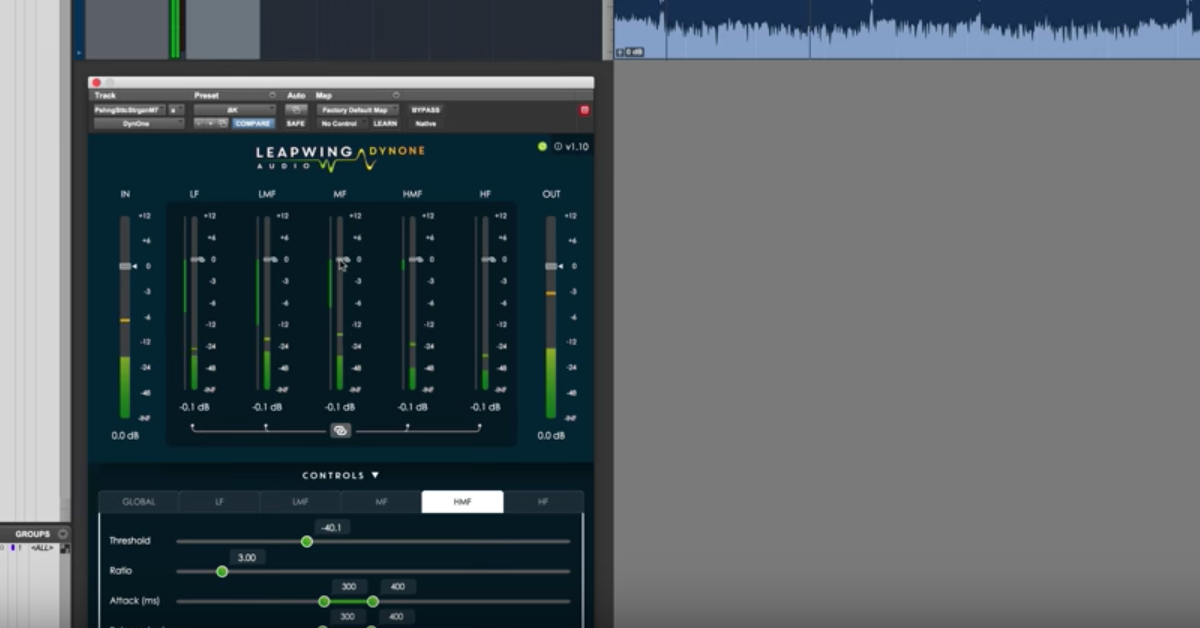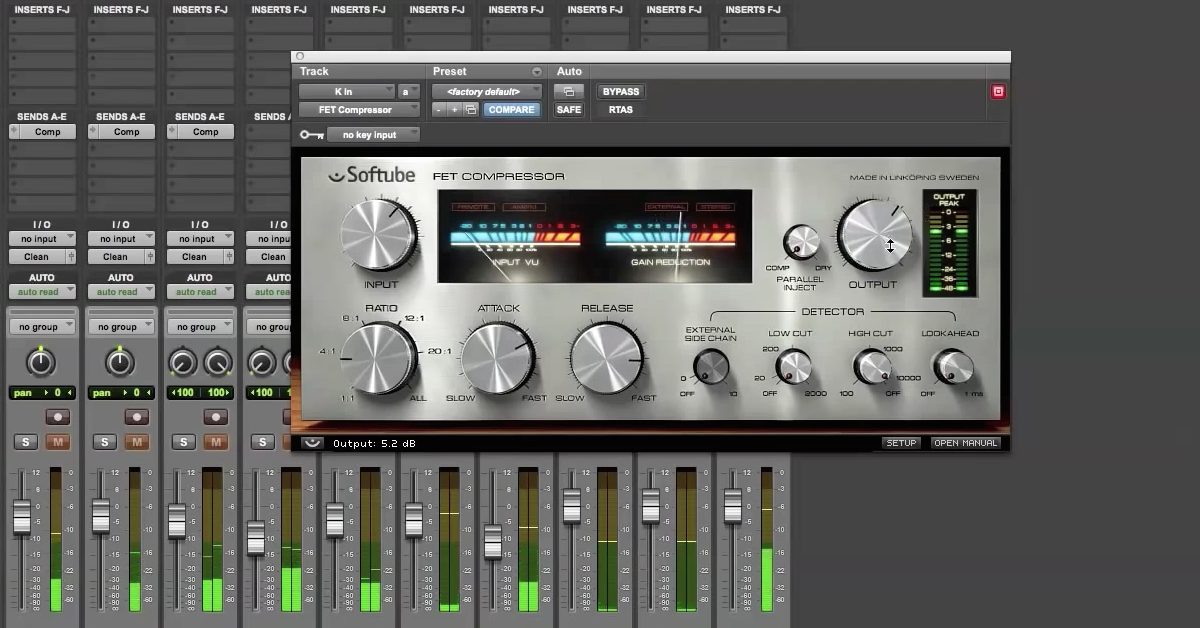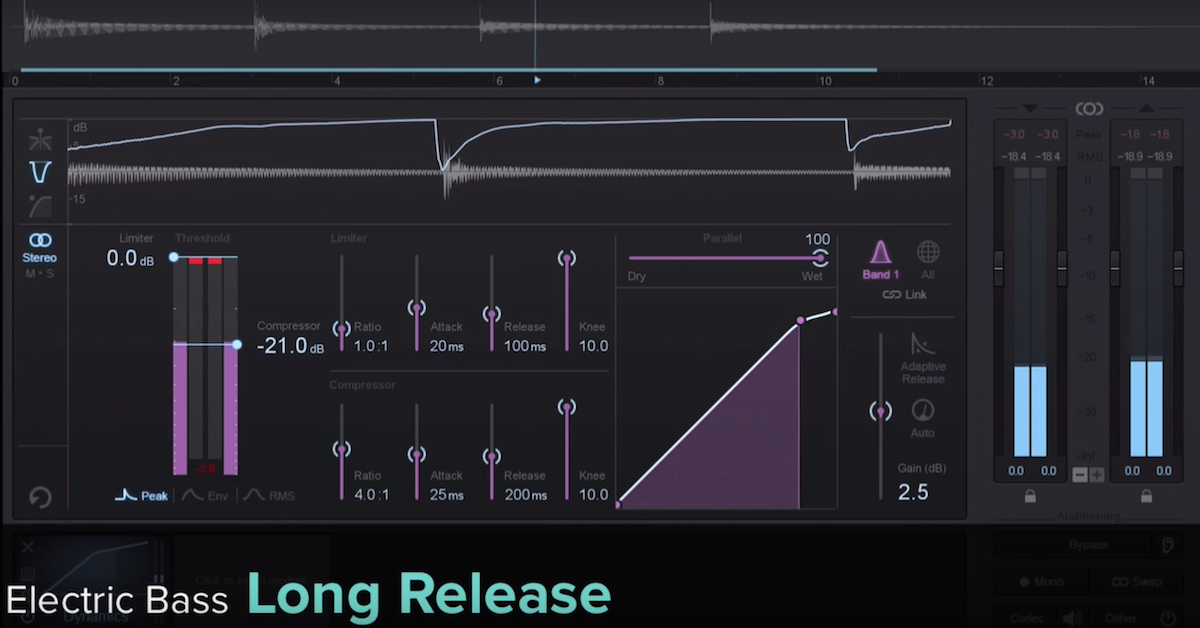8 Great Compressor Plugins for Mastering
Article Content
Compression is a great tool for any mastering engineer. It can help shape the tone, control dynamics, and boost the perceived (and actual) loudness of your source material.
Here’s a roundup of my most used compressor plugins as well as some unique features of each.
1. UAD Shadow Hills Mastering Compressor
The hardware unit is a behemoth, consisting of several compressors in one, with many different controls and options. Don’t let the complicated look fool you; once you get a feel for the Shadow Hills, it’s extremely easy to dial in a great sound.
I generally use slow attack and fast release times when applying compression to an entire mix, and only want to be applying 1-2dB of gain reduction as to not introduce pumping or compromise the mix. The Shadow Hills Mastering Compressor can be very transparent, or it can be pushed to get a huge, modern, in-your-face sound.
Unique feature: There are many unique features on this one, but I’d have to go with the Nickel, Iron and Steel Transformer Types. Nickel is clean, Iron is subtly saturated, and Steel adds a pretty noticeable low end bump to your material.
2. Cytomic The Glue
The Glue is my favorite of the SSL-style compressors because it has a wet/dry blend knob. The Glue lives up to its name and really helps your material subtly breathe and “sit” within the same context.
The original SSL Bus Compressor has a very simple and functional layout, making it easy to quickly dial in a sound. You’ll find other emulations of this classic compressor from Waves and UAD.
Unique feature: As mentioned, The Glue has a wet/dry blend, so if I want to really push it and go for more than 3dB of gain reduction — add some subtle pumping — this allows me to dial back the entire mix for a more transparent sound while still boosting perceived loudness.
3. PSP MasterComp
Here’s another extremely versatile compressor with a lot of controls. It’s also specifically designed for mastering. PSP MasterComp is mostly transparent as long as it’s not pushed too hard, which is honestly what I’m looking for in a compressor most of the time. It does a fine job of adding intensity without unwanted pumping.
The metering is also great and includes more detail than most other mastering compressors.
Unique feature: It has a mix knob (wet/dry control), which as I’ve established, I really love. Additionally, it has unique side-chaining options, allowing you to compress more subtly by preventing extreme high and low frequencies from driving the compressor. It even has an external side-chain option, which is somewhat rare for a mastering compressor.
4. UAD Manley Vari-Mu
This is definitely the compressor on the list with the most tone. It doesn’t have as many features or intricate controls, but that doesn’t matter because this compressor makes your material sound better simply with the warm, rich tone it imparts onto the signal.
I’m very familiar with the hardware original and this is an excellent and faithful emulation.
Unique feature: The ability to work in mid-side mode adds a useful feature to what is already one of the most sought-after bus compressors.
5. iZotope Ozone Vintage Compressor
The Vintage Compressor in Ozone 7 does a great job of combining the precise digital controls typical to the entire Ozone 7 Suite with a warm, vibey tone. I immediately notice a pleasant bump in the high end when using this compressor.
The three different modes and mid-side option make it a very versatile choice if you need to add some vintage character to your material.
Unique feature: The Auto-Gain Compensation feature allows you to really hear if the compression that you’re applying is enhancing your source material, or simply making it louder.
6. Vertigo VSC-2
I love the VSC-2 Quad Discrete Compressor from Vertigo Sound for when I am looking for the functionality of an SSL buss compressor, but with a different sonic flavor. UAD and Brainworx nailed this emulation of the very first hardware unit from Germany’s Vertigo Sound. The VSC-2 has a decidedly vintage flavor to it and is great for adding coloration and ‘glue’ to your two-buss and/or masters.
If you’re hoping for a mastering compressor that simply boosts perceived loudness without imparting character and ‘movement’ to your music, you may be better served elsewhere, but if adding texture and life to your program material is in order, the VSC-2 brings the goods. The stepped attack and release controls offer similar times to the famed SSL compressor unit, with the attack ranging from .1 to 30ms, and the release ranging from .1 to 1.2 seconds (also featuring an auto setting).
There are two unique settings on the ratio control: ‘soft’ which allows for more transparent taming of transients, and ‘brick’ which cuts off signal peaks entirely. Both of which are quite usable depending on the material. I recently mixed a rock track that needed some vintage vibe, and the VSC-2 did just the trick. Kick and snare transients are shaped in a really distinct way, and the mid-range becomes a bit more lively.
Mastering Tip: Make use of the sidechain (SC) filter. It’s advisable, especially when using extreme settings and therefore applying large amounts of compression, to preserve the low end by engaging a sidechain filter. Essentially, what happens is the filter assures that less low-end frequencies are fed to the compressor, and will prevent excessive ‘pumping’ and other negative artifacts. The VSC-2 sidechain section features separate 60Hz and 90Hz sections, which really allow you to dial in how the compressor reacts to low frequencies.
7. UAD SSL G-Buss
Widely hailed as the ultimate ‘glue’ compressor for mix buss duties, the SSL G-Buss Compressor plugin from Universal Audio is an end-to-end emulation of the legendary hardware unit which has sculpted the dynamics of countless records. UAD integrated several useful extra features including an internal sidechain filter which allows you to prevent an excess of low frequencies reaching the compressor and causing unwanted ‘pumping’ , a mix control which allows you to create a balance of the ‘wet and dry’ signals, and a headroom control in case you need to trim your signal before hitting the compressor.
The stepped attack, release and ratio controls help you achieve that famous SSL glue quickly. The SSL Buss compressor definitely has ‘a sound’, and as I mentioned earlier, it’s a popular choice for mix buss duties, however, if mix you’re delivered is lacking in cohesion, I wouldn’t hesitate to use the UAD SSL G-Buss Compressor instead of, or in addition to another mastering-grade compressor.
Mastering Tip: Use a Slow Attack/Fast Release. One of the most common errors of novice engineers is over-compression which can results in pumping and weak low-frequency reproduction. I generally shoot for ‘just a kiss’ of gain reduction with the SSL, and I achieve this by using a slow attack (10 or 30 ms), a fast or moderately fast release (.1, .3 sec or ‘auto’), and set the threshold and ratio controls so that only about 1dB of compression is taking place during the loudest passages of the song. The sidechain control is similarly helpful in keeping the compressor working lightly, providing just the right amount of gain reduction before transients are compromised, and other unwanted artifacts appear. In the event you do want to experiment with more extreme settings, the mix knob is handy for achieving a happy balance between the unprocessed, and smashed signals.
8. DynOne by Leapwing Audio
When I saw that mastering engineer Bob Katz recommended DynOne for its transparency, depth, and ability to preserve transients, I figured it was worth a shot. Upon putting it through its paces on a wide variety of styles of music, Bob was right. This multiband compressor allows you to boost perceived loudness without compromising the source material to a degree that few, if any, other plugins do.
It’s apparent that a great amount of care and detail went into the design of DynOne, and the result is an extremely clean and open sounding dynamics processor. Multiband compressing can be a great tool at the mastering stage if an equalizer can’t successfully tame sibilant vocals or brittle cymbals, I’ll often teach for one. Similarly, if the kick drum/bass guitar relationship is problematic, I’ll employ one if an EQ isn’t working.
For these applications, the DynOne shines. Another nifty feature is the adaptive attack and release times. DynOne allows users to set a “range” rather than a static setting for how it reacts to the material. If set properly, the result is a natural-sounding, smooth compression that responds appropriately over time to a piece of music that evolves from being more transient-heavy to having more sustained sounds.
Mastering Tip: Utilize parallel multi-band compression. Ensure that you can see the “global” controls panel, and make sure that “parallel” is checked. This will allow you to blend in the compressed signal to taste alongside the original. can As per Bob Katz’ advice, start with the factory default, drop all of the faders to negative infinity, and then bring up the faders (either linked or unlinked if you need more control over how compression affects the frequency spectrum) until you’ve achieved a wet/dry balance that best suits the music. From there, experiment with ratio, attack and release time, etc. The resulting sound retains the natural qualities of the dry signal while providing the boost in volume and subtle liveliness of DynOne’s compression.
Honorable Mentions:
The warmth, width and clarity of the Fairchild make it something that I reach for every so often. Although the controls on any Fairchild-style compressor don’t exactly allow for fine-tuning of attack and release times, the ability to blend in the dry signal on this emulation more than makes up for its limitations.
Although this doesn’t have the tone and attitude of some other compressor plugins, the sheer amount of controls and usability, which are common to all FabFilter plugins, make it a reliable option for both mixing and mastering. I find myself learning new things about compression when I use the Pro- C 2 simply because the metering is so incredibly detailed.





